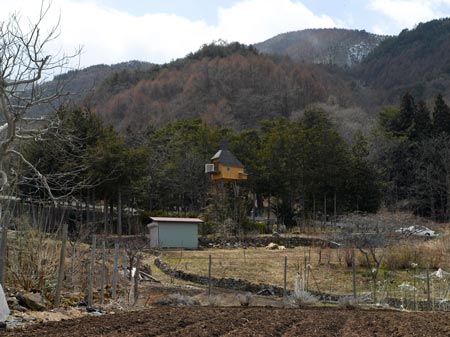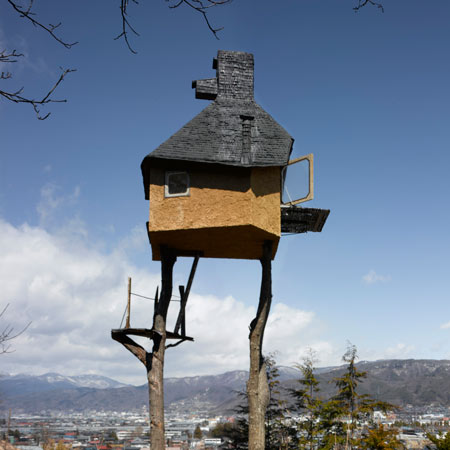
Takasugi-an by Terunobu Fujimori
Here's another of Terunobu Fujimori's projects photographed by Edmund Sumner: this time Takasugi-an, a tea house in Chino, Nagano Prefecture, Japan.
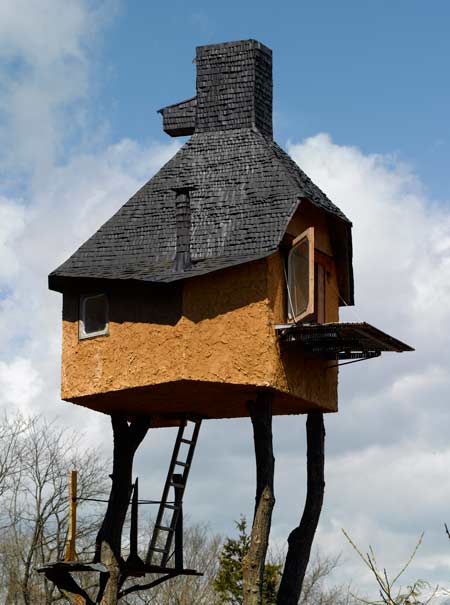
The tea house is built atop two chestnut trees, cut from a nearby mountain and transported to the site, and is accessible only by free-standing ladders propped against one of the trees.
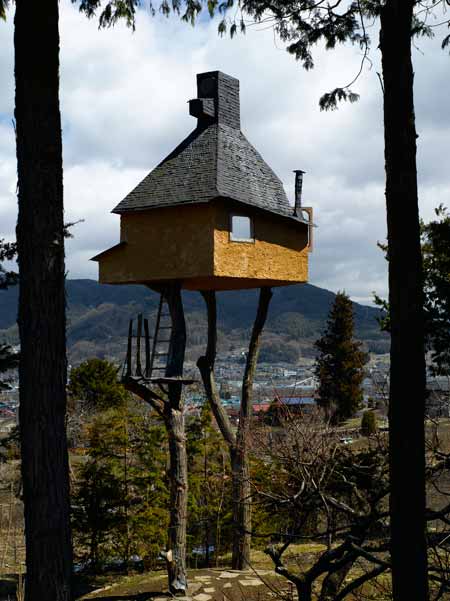
Following the tradition of tea masters, who maintained total control over the construction of their tea houses, Fujimori designed and built the structure for his own use.
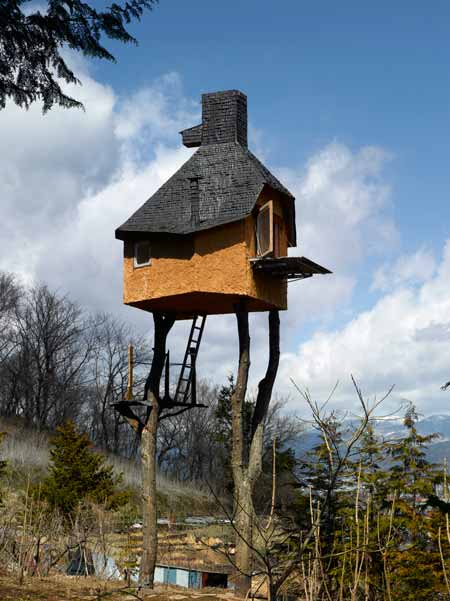
The interior is covered with plaster and bamboo mats.
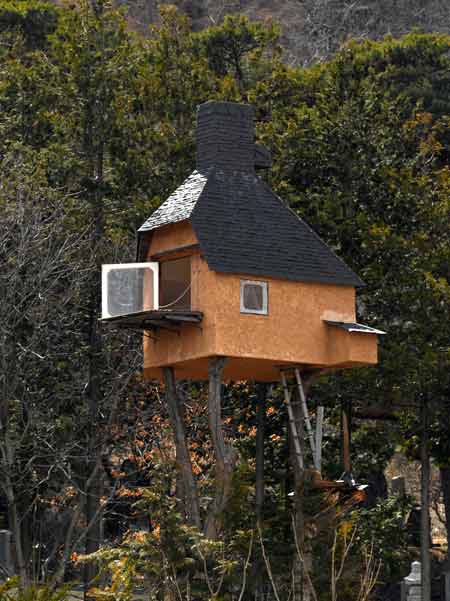
The name Takasugi-an means, “a tea house [built] too high.”
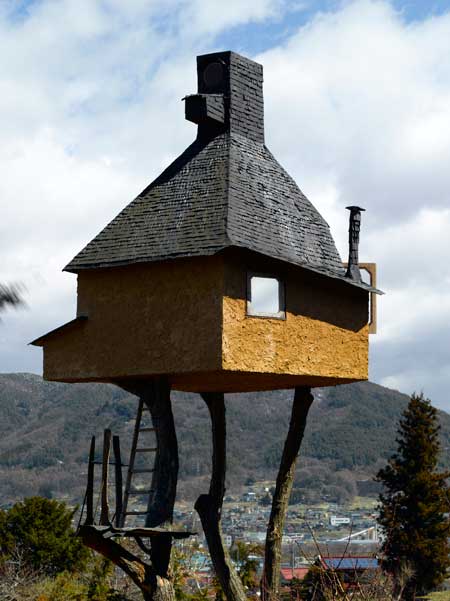
See more Japanese architecture in our Top Ten Japanese Projects
Here is some text about the Tea House, written by Yuki Sumner:
--
Takasugi-an
Chino City, Nagano Prefecture
Terunobu Fujimori, 2003-2004
The academician and architect, Terunobu Fujimori, has observed that a teahouse is “the ultimate personal architecture.” Its extreme compactness, which would at most accommodate four and a half tatami mats (2.7 square metres) or even just two tatami mats (1.8 square metres) of floor space, makes it feel as though it were an extension of one’s body, “like a piece of clothing.”
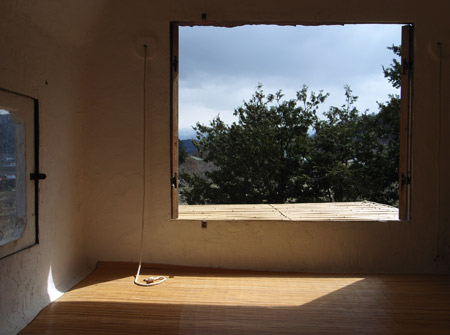
The tea masters traditionally maintained total control over the construction of these "enclosures," whose simplicity was their main concern. They therefore preferred not to involve an architect or even a skilled carpenter - an act considered as being too ostentatious. Following this tradition, Fujimori decided to build a humble teahouse for himself and by himself over a patch of land that belonged to his family.
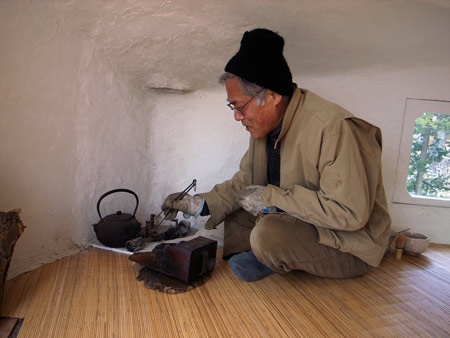
His interest as an architect, however, lay more in pushing the limit and constraints of a traditional teahouse rather than pursuing the art of tea making, and as a result, he has created a highly expressive piece of architecture.
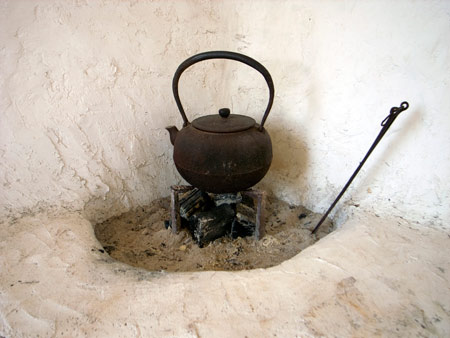
Takasugi-an, which literally means, “a teahouse [built] too high,” is indeed more like a tree house than a teahouse. In order to reach the room, the guests must climb up the freestanding ladders propped up against one of the two chestnut trees supporting the whole structure. The trees were cut and brought in from the nearby mountain to the site.
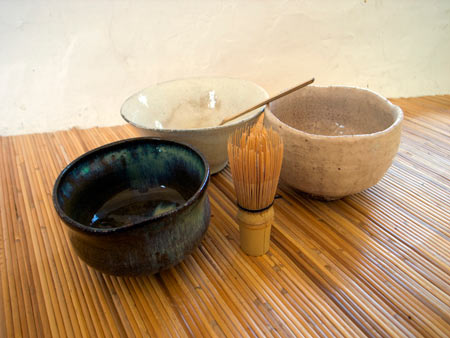
Shoes are taken off at the midway point. Once inside the room, which is padded simply with plaster and bamboo mats, the architect’s adventurous spirit gives way to the serenity more suited to the purpose of making tea and calming one’s mind.
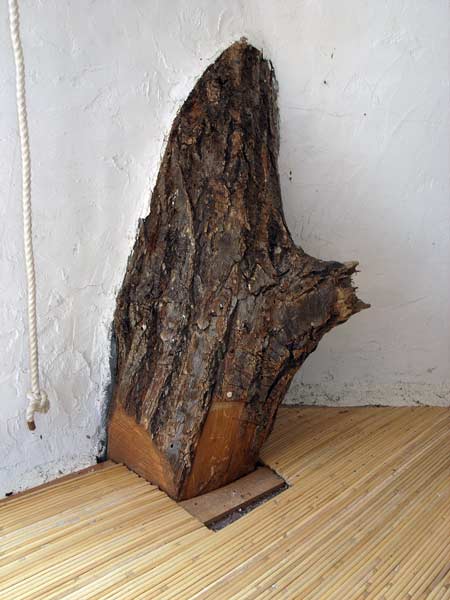
The room displays a large window that frames the perfect bird’s eyes’ view of the town where Fujimori grew up. It effectively replaces kakejiku (a picture scroll) that would indicate clues appropriate to the time of the year in traditional teahouses. This kakejiku not only displays the cyclical seasonal changes but also the profound irreversible changes taking place in provincial towns like Chino.
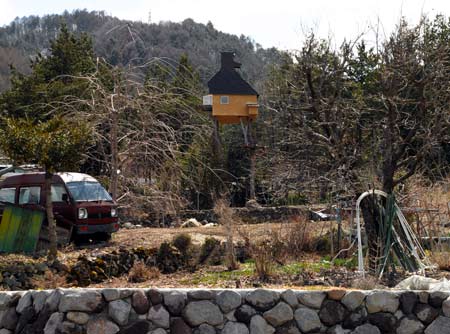
Also visible in the distance is Fujimori’s very first project, Jinchokan Moriya Historical Museum. The architect’s penchant for the personal, vernacular, and everyday is particularly evident here in this swaying teahouse.
